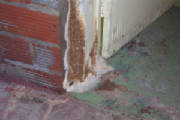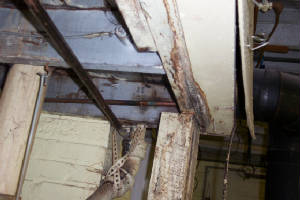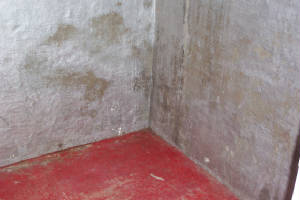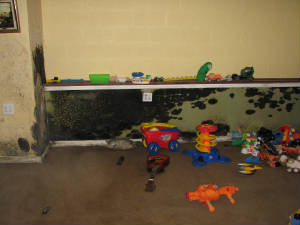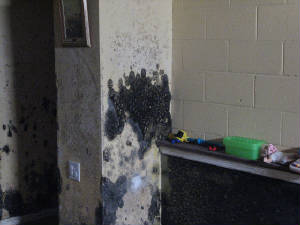|
|
We
provide mold and bacteria prevention and remediation services for existing and new structures.
"Let our professionally trained staff help you
with water damage, sewage backups & mold remediation."
SERVICE AREA:
ENTIRE State of Ohio
OFFICES IN:
Cleveland
Mansfield
Columbus
Call: 877-377-1274
|
|
Mold Growth
The
term “mold” describes more than a million species of microscopic fungi that grow on wet or damp organic matter,
such as paper, fabric, wood, cellulose-containing materials, insulation, and ceiling tiles. Several hundred of these organisms
may be present in indoor environments. The growth requirements for most indoor molds are relatively simple: oxygen (usually),
suitable temperature range, a supply of nutrients, and excess moisture, Moisture is the factor that is most controllable and
should be the focus of mold prevention and initial remedial efforts.
Mold grows on surfaces
of materials that can provide organic nutrients and where excess moisture is available. A visible growth of mold is called
a colony. A material which is supporting active growth and proliferation of colonies on its surfaces is called an
amplifier. One of the ways that molds reproduce and spread is by specialized microscopic cells
called spores. Spores, when dry, are buoyant and readily dispersed by air movement. A single spore or other viable
mold particle can rapidly germinate, within days, to form a new colony-which in turn can produce millions of additional spores.
Airborne
and deposited mold particles are present throughout the environment, both outdoors and indoors, Molds from the outdoors are
readily transported into a building as air moves through doors and windows. People carry mold spores from the outdoors and
from other indoor environments on their clothing, foot wear, and on other items that are brought into the building. Consequently,
whenever mold testing is done, some mold is likely to be found; however, the mere detection of mold in an indoor sample does
not indicate that problematic indoor mold growth is occurring, Finding indoor mold growth and favorable conditions
for mold growth are the goals of the investigation.
|
|
|
|
|

|
|
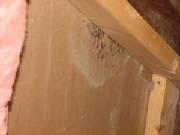
|
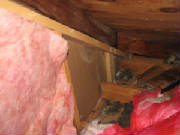
|
Health Effects of Mold
Many molds can produce a variety of allergenic substances, odorous chemicals,
and toxic metabolites. The specific agents produced by mold that can affect human health are not always predictable; they
may vary in type, quantity, and strength from species to species and even form one strain or isolate to another of the
same mold species. For example, a colony that is producing specific harmful agents at one time might not produce the same
agents if the conditions where it is growing change, or if it spreads to a new location with a different set of micro-environmental
conditions. The situation is further complicated by the fact that multiple species of mold are often present when an indoor
mold problem exists, and each species may be influenced differently form the others as micro-environmental factors change.
In order for mold to affect health, it must contact or enter the body. People
are mainly exposed to mold by inhaling spores and by skin/eye contact. Mold also releases a mixture of various volatile organic
chemicals into the air that people breathe and that may impact health.
When people are exposed to high levels of
mold, especially when it proliferates indoors, a spectrum of health effects may occur. Allergic symptoms are the most common
problems, such as mucous membrane irritation, rhinitis, and rashes. More severe effects, such as asthma attacks, hypersensitivity
pneumonitis, infections, or toxic reactions, may occur. However, since susceptibility to the effects of molds varies among
humans, health impacts from similar exposures also can vary greatly from person to person and may not be readily predictable
for some individuals and situations. Persons who are most likely to be susceptible include those with respiratory problems,
such as allergies or asthma, or a compromised immune system, the elderly, and the very young. Even when
an indoor mold problem has been characterized as well as is possible, there will always be uncertainty regarding if, or how,
the health of occupants may be affected. In fact, for a number of practical and logical reasons, the possibility that some
portion of any group exposed to molds will suffer adverse health effects can never be ruled out when mold is found growing
in occupied areas. Given that there is considerable uncertainty about the health consequences of exposure to contaminants
from indoor problems, it is recommended that any mold growing inside be regarded as a sign of a potential (current or future)
health hazard that should be corrected properly as soon as possible.
It should be noted
that the staff at ESS-Environmental Structural Solutions are not physicians and no conclusion(s) should be made in regard
to spore levels having any connection to an occupant’s symptoms or illness. It is recommended that anybody who believes
they have health problems related to mold seek professional medical attention.
ALL SERVICES HAVE A FIVE YEAR WRITTEN WARRANTY
VISIT
OUR WEBSITE –www.ess30.com- or give us a call - 877-377-1274
Columbus, OH Water Damage
Mansfield, OH Water Damage
Cleveland, OH Water DamageAkron, OH Water DamageBucyrus, OH Water DamageAshland, OH Water DamageTiffin, OH Water DamageWooster, OH Water Damage
Mt. Gilead, OH Water DamageMedina, OH Water Damage "Serving Ashland, Avon Lake, Brunswick, Dayton, Medina, Mentor, Parma, Pepper Pike, Solon, Westlake,
Wooster, OH, Ohio"
|


